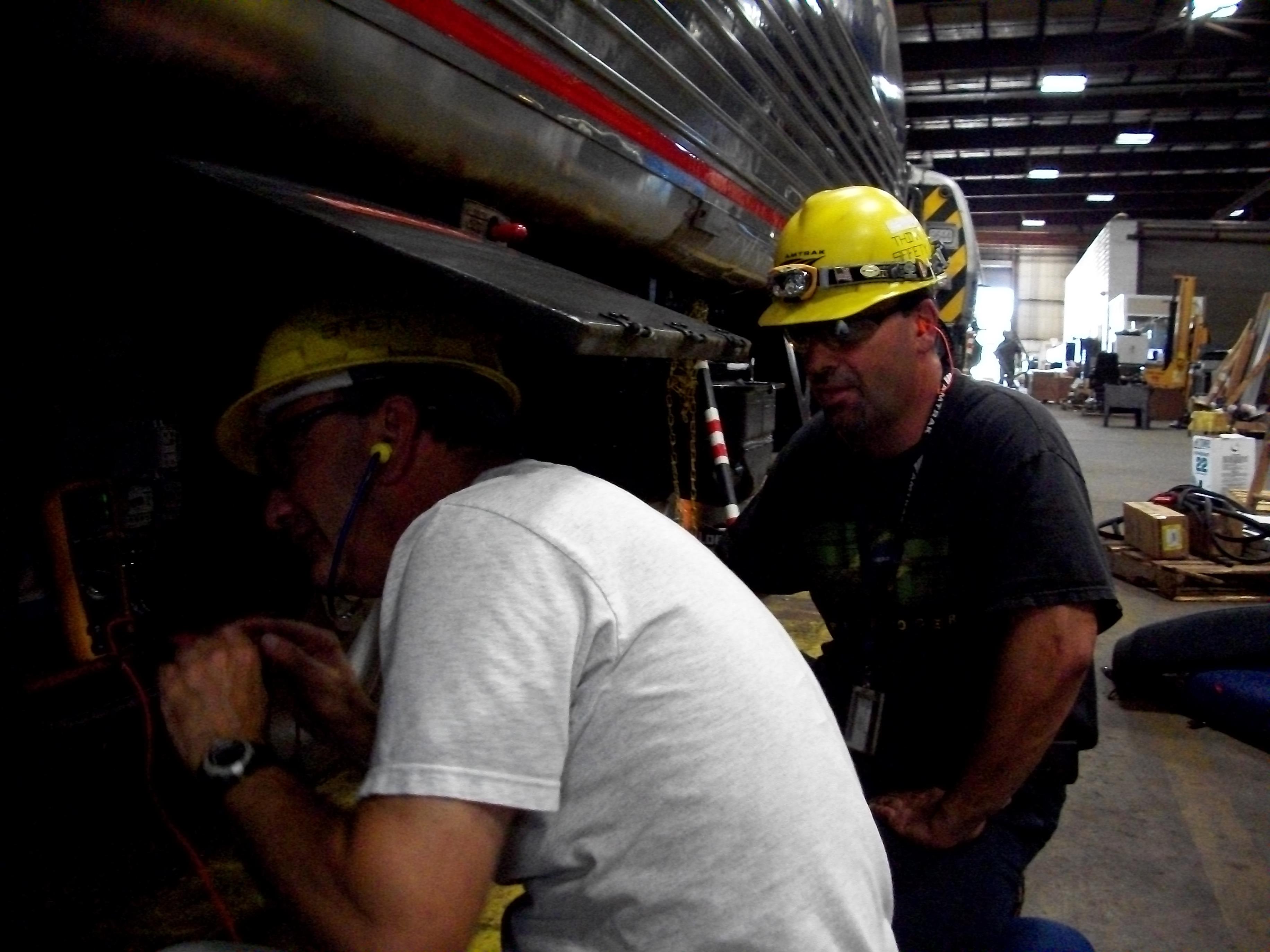Amtrak CEO Joseph Boardman presented a $1.8 billion budget request to Congress Feb. 12 with increases for tracks, bridges, engines and passenger cars.
“Amtrak ridership was over 30 million for the fifth year in
a row and set a record in the Northeast corridor, but Congress has not
responded to that increased use with increased investment,” Bohne said. “We are
on borrowed time already, so Congress should get this done quickly.”

|
| Sterling Rapposelli, left, and Tommy Rapposelli, members of Bear, Del., Local 2270, maintain Amtrak locomotives. The IBEW called for quick passage of Amtrak’s $1.8 billion budget request for 2017.
|
The approximately 1,200 IBEW members at Amtrak maintain
existing engines, passenger cars, communication systems, and overhead wiring,
keeping the railroad safe and efficient, but as it ages and reaches capacity,
inevitably delays and costs will rise. It is a recipe for a loss of ridership
and greater economic pressure.
Amtrak has made significant investment to meet the 2015
mandate for positive train control on the Northeast. Thanks to the hard work of
IBEW and other union railroad members, from north of Boston to Richmond, Va.,
Amtrak workers and passengers are protected by this automated safety system.
But the investment in PTC came at a cost. The most commonly
used cars in the system are nearly 40 years old, and the newest engines, for
the Acela service, came online when Bill Clinton was president.
“I ride those cars every day,” Bohne said. “They are still
clean and comfortable, but they are taking more work, and more costly work, to
keep them that way.”
The bigger worry, Bohne said, is not the rolling stock, it
is the infrastructure.
In the budget request letter sent to Vice President Joseph
Biden and Speaker of the House Paul Ryan, Boardman wrote, “The [Northeast corridor
trains] carry a significant portion of the traffic into and out of Northeastern
metropolises, but deferred investments threaten current performance and severe
capacity constraints limit the potential for future growth.”
The biggest concerns are the nearly 500 bridges in the
Northeast corridor system approaching, or already past, their 100th
year of service.
“That is our biggest worry,” Bohne said. “Amtrak gets
hamstrung by underfunding, hurting timeliness, hurting the bottom line, and
then Congress starts blaming the working people for making a decent wage.”
In March 2015, transportation economist Frank Wilner wrote
that simply modernizing the 450-mile Northeast rail infrastructure would cost
$20 billion. Upgrading to the high-speed rail now common in Asia and Europe
would cost $120 billion.
And that would not touch the problems in the rest of Amtrak’s
intercity passenger network which is spread over 21,000 track miles in 46
states, with 520 stations.
“Obviously a $1.8 billion dollar budget request won’t get us
where we need to be, but it would be a nice change if Amtrak wasn’t a political
football,” Bohne said. “It would give some solidity.”